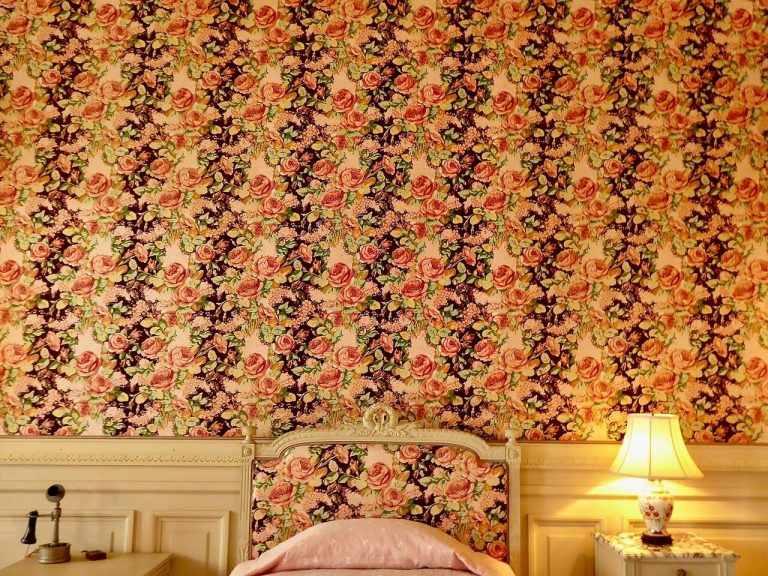Invented in the 16th century, wallpaper has been a big part of our home decoration ever since. It was found to be used inside cupboards and smaller rooms – it wasn’t until the 20th century that entire homes were decorated in wallpaper.
Today, wallpaper is often beloved by some and considered out of fashion by others; its popularity comes in waves. But one thing we know for sure is that it’s never going to disappear completely. It’s a good idea to learn how to repair any wallpaper that adorns your home.
In this article we will look at why wallpaper is used, what types of adhesives are available for applying it, and ultimately which glue is the best to repair any damage to it. Given that we are all fans of life hacks – most of which revolve around DIY – the too-long-didn’t-read answer to which glue is the best to repair wallpaper is Solvite.
Why do we use wallpaper
Wallpaper is predominantly used to add style to interiors. Art and decoration on walls is nothing new, but wallpaper has made it easy to create an overall aesthetic or statement wall that is somewhat temporary. Colours, patterns, and even fabrics can change the space and depth of an object or room and direct where your attention goes to.
Of course, by the time the Industrial Revolution happened, commercially-available wallpaper made it super easy for us – and in many cases our only option – to create such complex and picture-perfect styles and patterns in our home. It’s a lot more efficient than painting such patterns, even when you factor in repairs to it now and then.
How long does wallpaper last?
If you take reasonably good care of your home and do not have damp issues, wallpaper can usually last between 15-20 years. There will be signs of aging by this point to a degree, but less so than regular paint, which generally retains its sheen for less than half this time. In optimal circumstances and environments, wallpaper is designed to be very long-lasting.
Furthermore, with children in the home and frequent knocks to the walls, wallpaper is much better at not showing scuffs or marks than paint. Generally, paint needs to be touched up every couple of years if there is frequent contact to it, or at best, somewhat longer in homes with less traffic.
With that in mind, which one is more economical? Of course, paint costs less upfront compared to wallpaper, but this doesn’t mean wallpaper’s more expensive in the long run. In the right conditions, they can be similar in costs over time since paint needs frequent touch ups. Wallpaper is relatively inexpensive to repair so it may be well worth the investment.
It’s also good value for money regarding aesthetics, as the extensive selection of wallpaper designs, styles, and finishes is near infinite. For this reason, it’s common even for those who paint a house to have a DIY feature wall covered with wallpaper.
What are the types of adhesives available for wallpapers?
Applying wallpaper to a wall uses a standard adhesive, which is a cellulose ether and starch. This resembles a light or clear paste that is easily slathered onto the wall before the paper is applied. A ready-mixed wallpaper adhesive is also very popular, being sold in large 16kg buckets and can be used for most wallpapers.
These are great for light and heavy paper-based wallpapers, but for textile, silk, cork, and other materials a special adhesive is preferred. This special adhesive may contain a synthetic resin to increase the wall covering’s strength, which is needed for those heavier, non-paper-based wallpapers.
Though, with industrial wallpapers that use certain textiles, metals, and so on, a textile-specific adhesive is used. This usually has plastic dispersion glue as well as other components.
There are even some other adhesives for highly specific jobs, such as dispersion adhesives for non-woven wallpapers, that can be very useful.
What is the best glue to repair wallpaper?
Ultimately, for fast repairs of wallpaper Solvite is the iconic and time-tested option. It’s a very powerful adhesive and is made of a potato starch carboxymethyl ether, sodium salt, and a fungicide to inhibit mould growth. This last point is very important too, as mould is a very common problem in European homes that were built in or before the Victorian era.
Condensation is common where insulation has been poorly installed. This high humidity actually leads to wallpaper needing to be repaired more often. Therefore, when it wallpaper is hanged, having a mould repellent within the adhesive provides good protection to a problem that likely already exists.


0 Comments